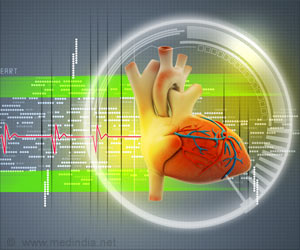Adult mammals have low level of cardiac muscle cell; so their heart tissues have limited capacity to regenerate after an injury such as a heart attack.

A team led by Prof. Ed Morrisey, Medicine and Cell and Developmental Biology and the scientific director of the Institute for Regenerative Medicine in the Perelman School of Medicine at the University of Pennsylvania, has now shown that a subset of RNA molecules, called microRNAs, is important for cardiomyocyte cell proliferation during development and is sufficient to induce proliferation in cardiomyocytes in the adult heart.
MicroRNAs, which do not generate proteins, repress gene expression by binding messenger RNAs, which do generate proteins, and promote their degradation. The findings appear this week in Science Translational Medicine.
The team found that the loss of the microRNA cluster miR302-367 in mice led to decreased cardiomyocyte cell proliferation during development. In contrast, increased expression of the microRNA cluster in adult hearts led to a reactivation of proliferation in the normally non-reproducing adult cardiomyocytes.
This reactivation occurred, in part, through repression of a pathway called Hippo that governs cell proliferation and organ size. “The Hippo pathway normally represses cell proliferation when it is turned on. The cluster miR302-367 targets three of the major kinase components in the Hippo pathway, reducing pathway activity, which allows cardiomyocytes to re-enter the cell cycle and begin to regrow heart muscle,” explains Morrisey. “This is a case of repressing a repressor.”
In adult mice, re-expression of the microRNA cluster reactivated the cell cycle in cardiomyocytes, resulting in reduced scar formation after an experimental myocardial infarction injury was induced in the mice. There was also an increase in the number of heart muscle cells in these same mice.
Advertisement
“We overcame this limitation by injecting synthetic microRNAs with a short half-life called mimics into the mice,” says Morrisey. Mimic treatment for seven days after cardiac infarction led to the desired increase in cardiomyocyte proliferation and regrowth of new heart muscle, which resulted in decreased fibrosis and improved heart function after injury.
Advertisement
“The next stage in this study is to determine whether miRNA mimics will work in a larger animal model and to collaborate with bioengineers to create a local delivery system for the heart, rather than giving it systemically,” notes Morrisey.
Coauthors are Ying Tian (previously a postdoctoral fellow in the Morrisey Lab who is now an assistant professor at Temple University), Ying Liu, Tao Wang, Ning Zhou, Jun Kong, Li Chen, Melinda Snitow, Michael Morley, Deqiang Li, Nataliya Petrenko, Su Zhou, Minmin Lu, and Kathleen M. Stewart, all from Penn. Erhe Gao and Walter J. Koch are from Temple University.
Source-Medindia













